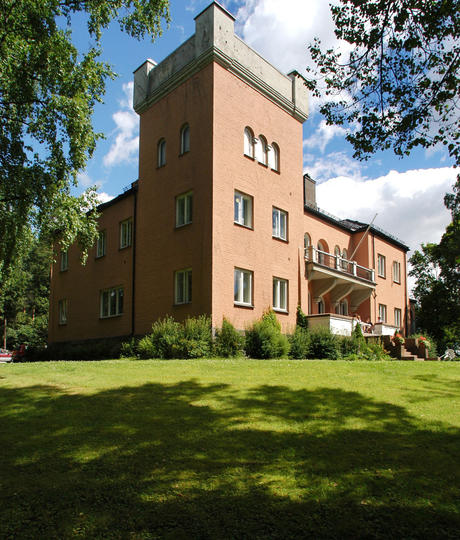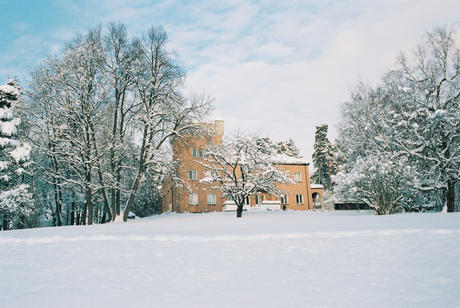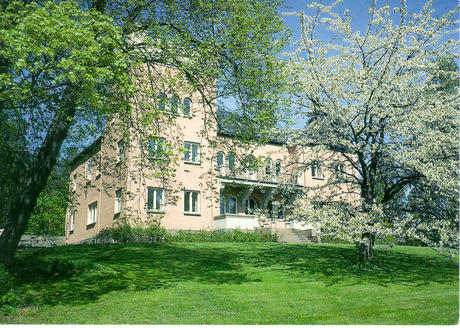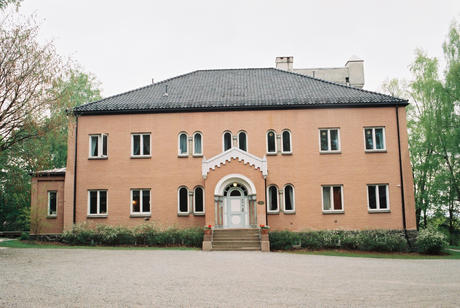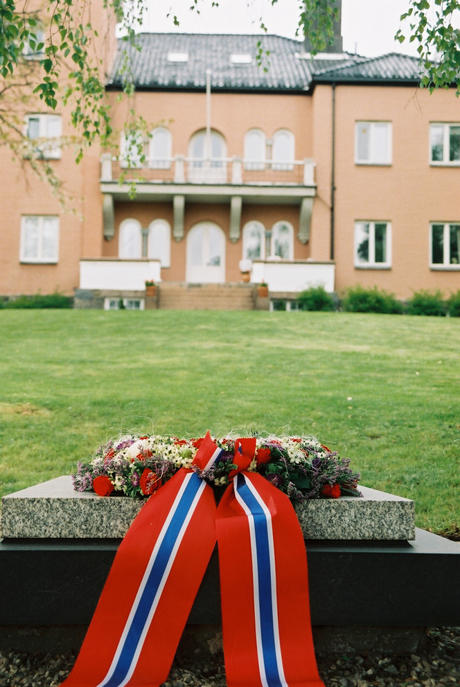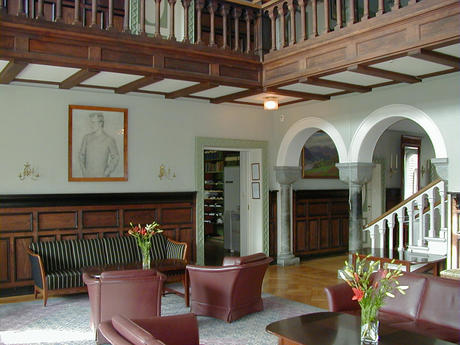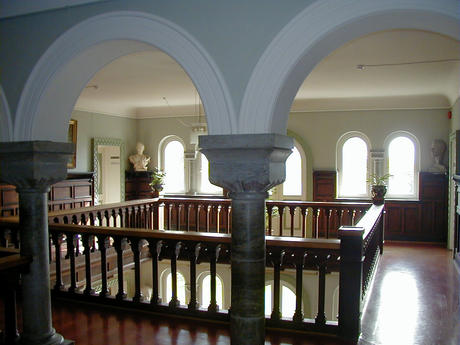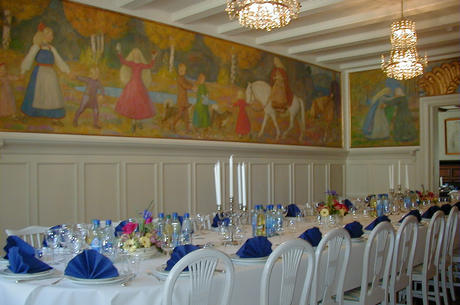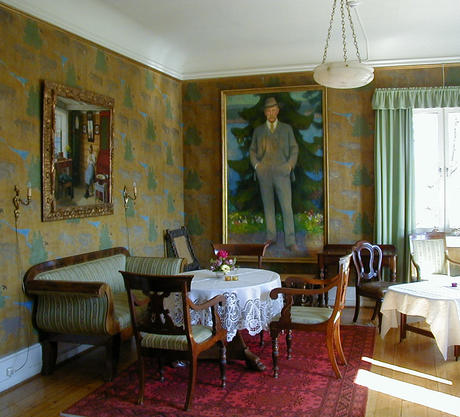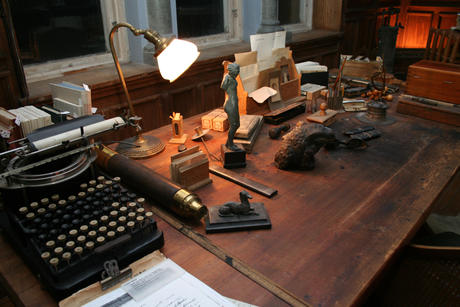DINING ROOM WALL PAINTINGS
|
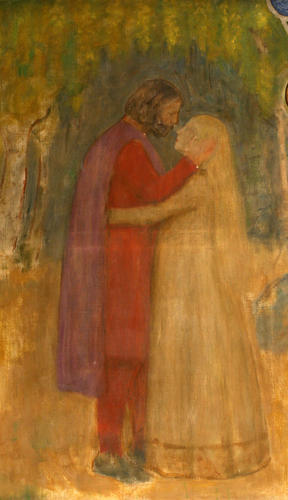 |
 |
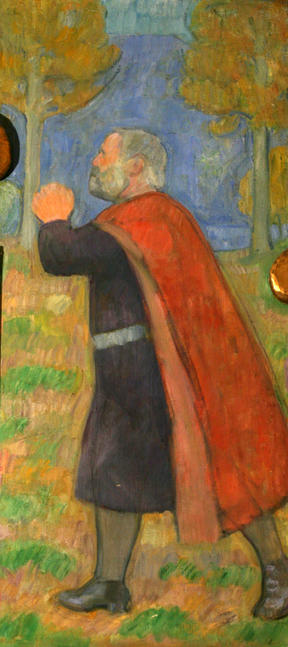 |
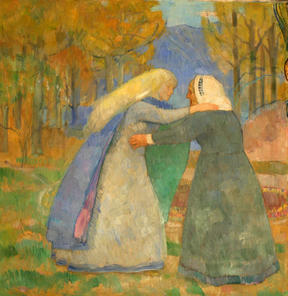 |
 |
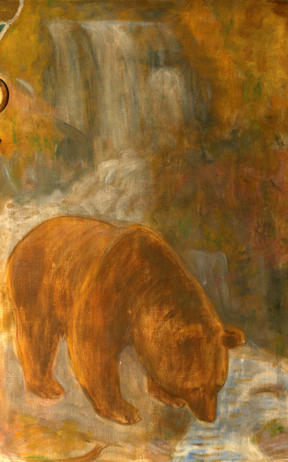 |
The dining room is light and festive, in part thanks to Erik Werenskiold's wall paintings (1904-1907), illustrating the Norwegian folk song "Liti Kjersti". This folk song tells of little Kjersti who is seduced by the Elf King, gives birth to his children, is spellbound and then drinks the "drink of forgetfulness", thus losing all memory of her previous life.
Photocopies: Jan Dalsgaard Sørensen |
THE EARLY NANSEN: POLAR EXPLORER AND SCIENTIST
|
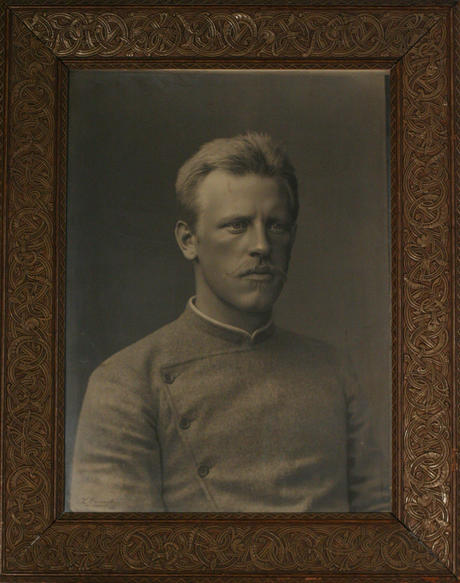 |
Portrait, 1889
By L. Szacinski, Christiania's leading photographer at the time and photographer to the Royal Court. It was only natural that he should also be photographer to the Nansen family.
The large portrait hanging at Polhøgda is dated 1896, but was actually taken in 1889, upon Nansen's return from Greenland.
Photocopy: Jan Dalsgaard Sørensen
|
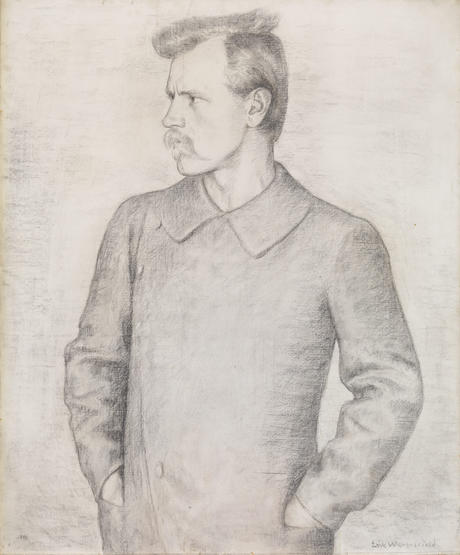 |
Portrait, 1893
Nansen ready for his great North Pole expedition.
Drawing by Nansen's life-long friend Erik Werenskiold.
Photocopy: Børre Høstland. © The National Museum of Art, Architecture and Design |
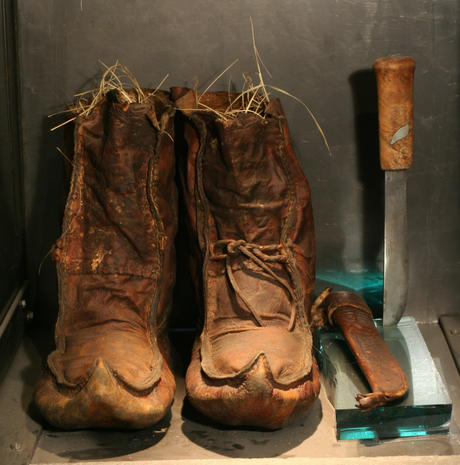 |
Fram expedition
Nansen's boots and knife, used during the 1893–96 Fram expedition in the Arctic Sea. The boots are on loan from the Fram Museum, the knife has been donated by Norwegian actor Knut Wigert, who portrayed Nansen in a 1968 movie.
Photo: Jan Dalsgaard Sørensen
|
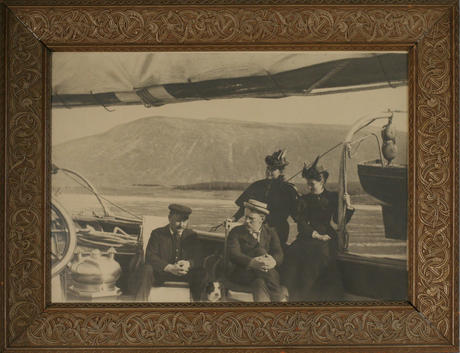 |
Return from the Arctic
After his miraculous rescue in 1896, Nansen travelled down the Norwegian coast, receiving a hero's welcome at every port. Here he is seen on board Sir George Baden-Powell's yacht Otaria, heading south towards Tromsø. Nansen's wife Eva has come north to join him.
Photocopy: Jan Dalsgaard Sørensen |
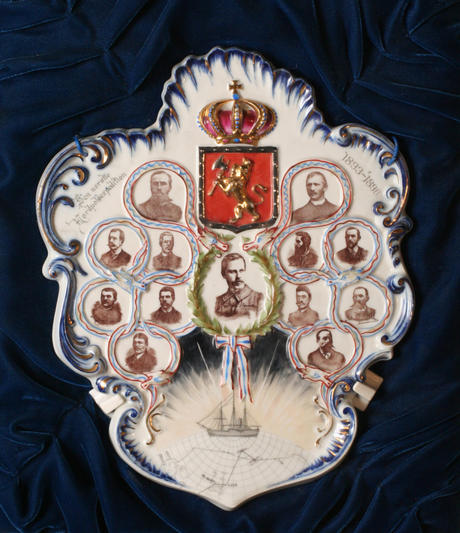 |
The heroes of Fram
A memorial plaque to the participants of the Norwegian North Pole Expedition 1893–1896.
Photo: Jan Dalsgaard Sørensen |
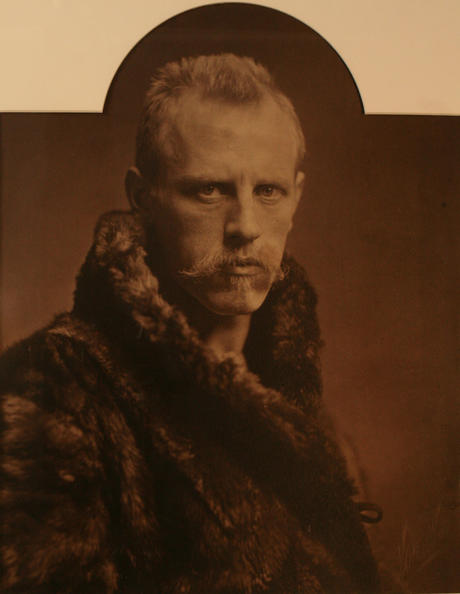 |
Portrait, 1897
By London photographer Henry van der Weyde, taken in 1897, a few months after the return of the Fram expedition.
Photocopy: Jan Dalsgaard Sørensen |
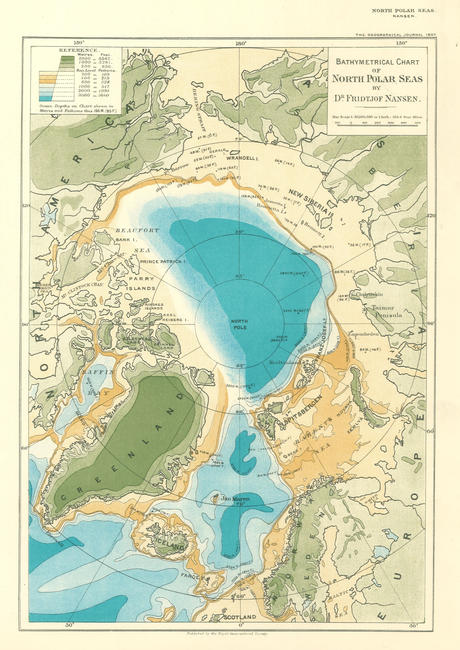 |
Bathymetrical Chart of Northern Polar Seas
by Dr Fridtjof Nansen
Throughout the Fram expedition, Nansen kept the crew busy carrying out scientific measurements, including ocean depth soundings. This bathymetrical map of the Arctic Ocean was one of many scientific results published after their return. |
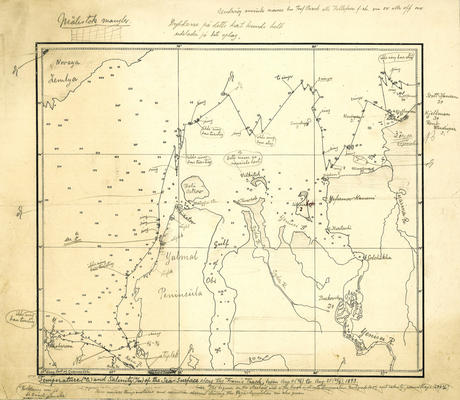 |
Scientific work
Nansen spent years going through the scientific results of the Fram expedition, before publishing them in the 6-volume The Norwegian North Polar Expedition 1893-1896: Scientific results edited by Fridtjof Nansen, issued 1900-1906. This map showing Fram's progress through the Kara Sea is one of several preliminary versions, with numerous handwritten corrections and comments by Nansen. |
NANSEN'S WIVES
|
|
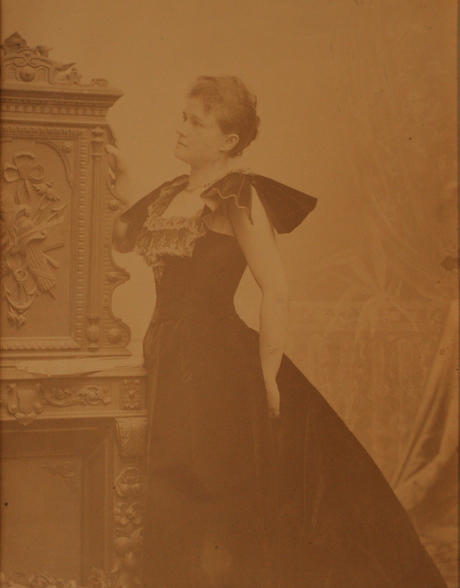 |
Eva Nansen
Fridtjof Nansen married Eva Sars in 1889, and they had five children together. She was a gifted romance singer as well as a pioneer of female skiing. Her early death in 1907 was a hard blow to Nansen.
This photograph was taken in Stockholm in 1895, during Eva's last concert tour. Fridtjof Nansen kept it in his study room, where it can still be seen today.
Photocopy: Jan Dalsgaard Sørensen |
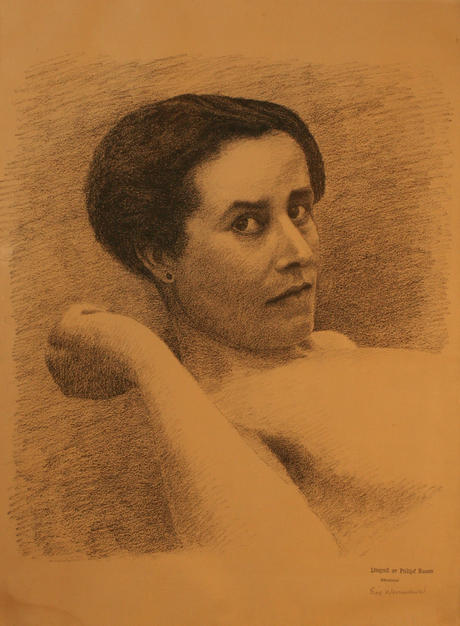 |
Sigrun Nansen
Sigrun Munthe became Fridtjof Nansens second wife in 1919, but spent many unhappy and lonely days at Polhøgda while her husband travelled widely on humanitarian and diplomatic missions.
It is believed that Nansen and Sigrun had been romantically involved even before the death of Eva Nansen. This lithograph was drawn by Nansen himself, probably around 1905.
Photocopy: Jan Dalsgaard Sørensen |
LATER YEARS: DIPLOMAT AND HUMANIST
|
|
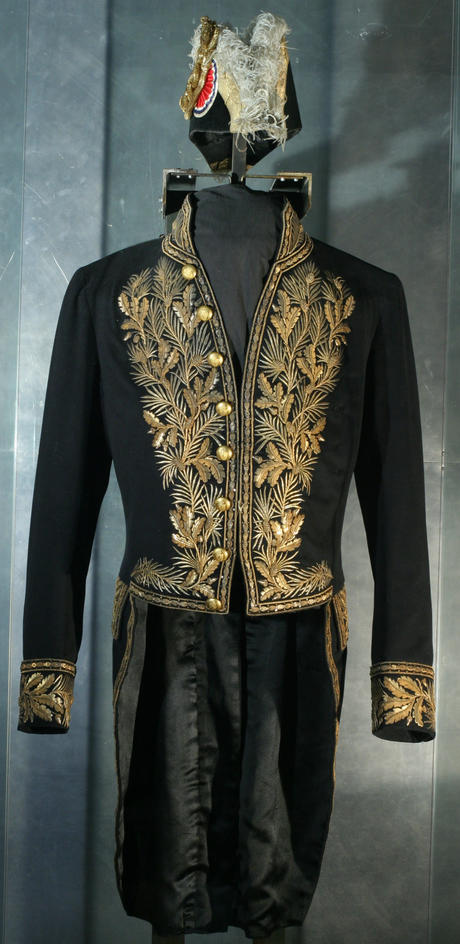 |
Ambassador
After Norway became independent of Sweden in 1905, Nansen became Norway's first envoy to the United Kingdom, living in London from 1906 to 1908.
His ambassador's uniform is still preserved at Polhøgda.
Photo: Jan Dalsgaard Sørensen |
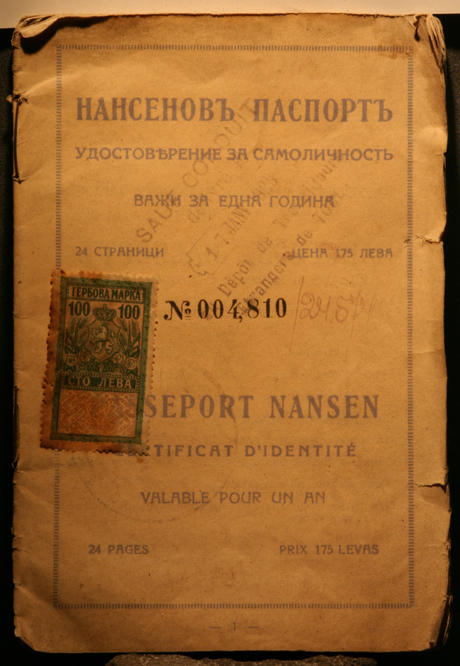 |
The Nansen Passport
In 1921, Nansen devised the Nansen Passport, an identy card for stateless refugees. The document was recognized by many European states, and helped hundreds of thousands of stateless people to immigrate to a country willing to receive them.
This specimen was issued by Bulgarian authorities in 1928 to Russian refugee Pavel Kiprianovitch Kastorny, and enabled him to travel to France to start a new life there.
Photo: Jan Dalsgaard Sørensen
|
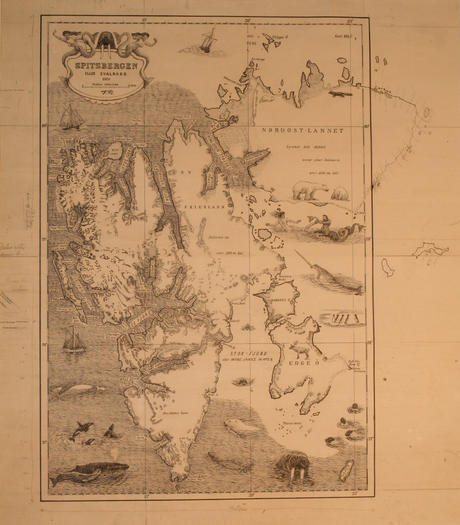 |
Map of Spitsbergen
Also in his later years, Nansen never lost his interest in the North and in science. He drew this artistic map of Spitsbergen (Svalbard) for his much delayed book A Journey to Spitsbergen in 1920. With hand-written pencil notes.
Photocopy: Jan Dalsgaard Sørensen |
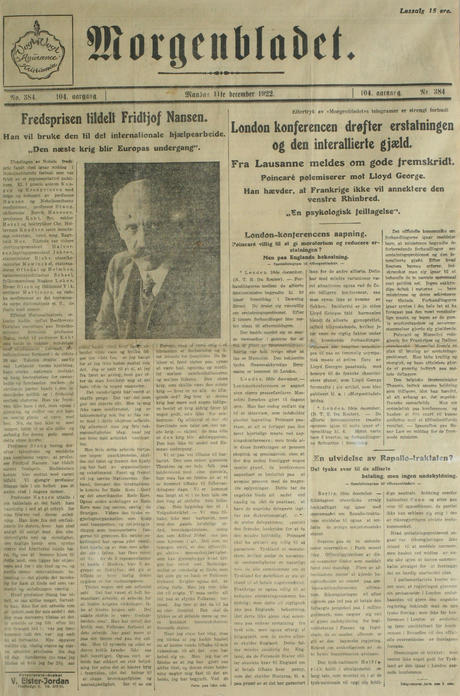 |
Nobel Peace Prize
"Peace Prize awarded to Fridtjof Nansen. He will use it for international relief efforts. 'The next war will be the doom of Europe'."
Morgenbladet (Oslo), 11 December 1922
Photocopy: Jan Dalsgaard Sørensen |
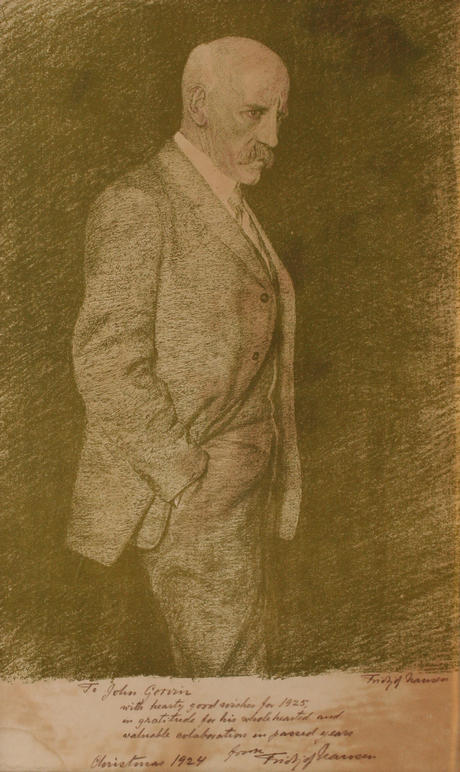 |
Self-portrait, Christmas 1924
"To John Gorvin
with hearty good wishes for 1925, in gratitude for his wholehearted and valuable colaboration in passed years
from Fridtjof Nansen"
Photocopy: Jan Dalsgaard Sørensen |
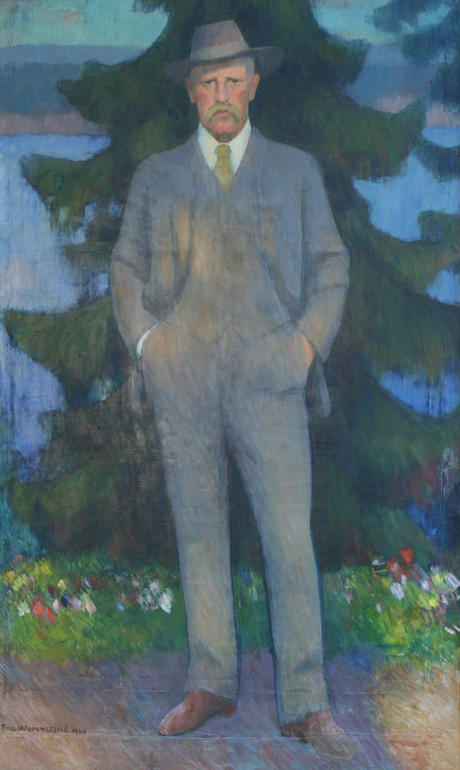 |
Portrait
Painted by Nansen's friend and neighbour, the painter Erik Werenskiold, in 1938, eight years after Nansen's death.
Photocopy: Jan Dalsgaard Sørensen
|
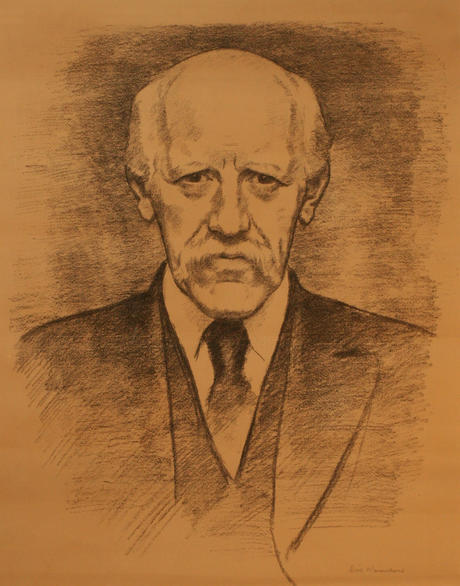 |
Portrait
By Erik Werenskiold, around 1924.
This drawing was discovered in the attic in the 1980s, and is probably the only Nansen portrait that has been kept at Polhøgda permanently since Nansen's days.
Photocopy: Jan Dalsgaard Sørensen |
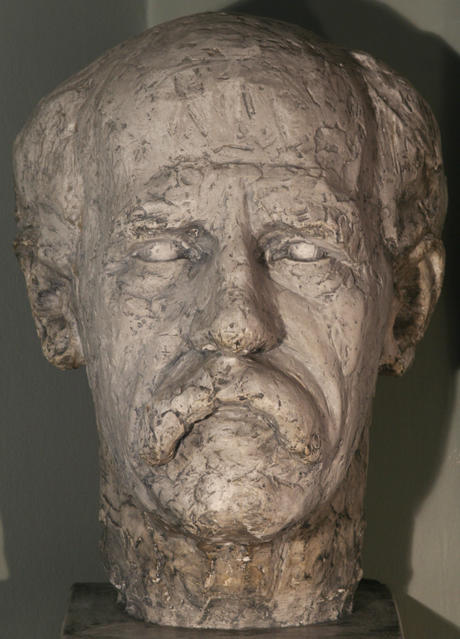 |
Portrait
By Dagfin Werenskiold, son of Erik Werenskiold, probably in 1924.
Photo: Jan Dalsgaard Sørensen
|
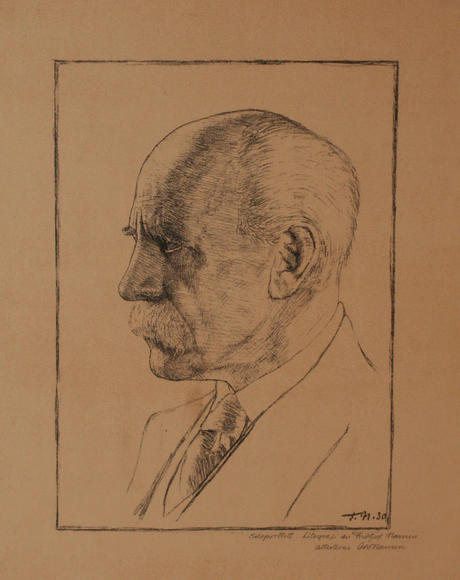 |
Self-portrait, 1930
Lithograph, 1930. Authenticity attested by Fridtjof Nansen's son Odd Nansen.
Photocopy: Jan Dalsgaard Sørensen |
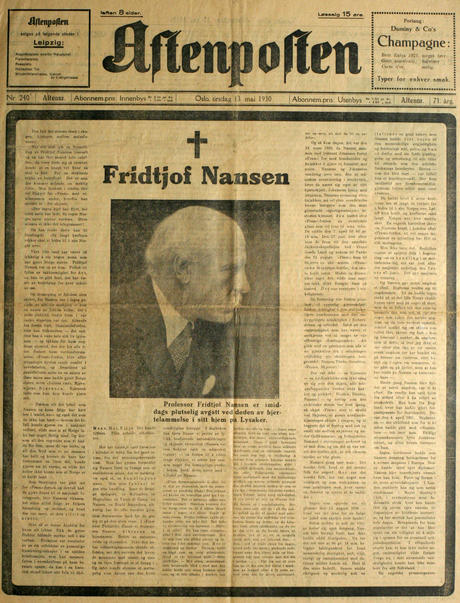 |
Nansen dies
"Professor Fridtjof Nansen suddenly passed away today at noon due to heart failure in his home at Lysaker"
Aftenposten (Oslo), 13 May 1930
Photocopy: Jan Dalsgaard Sørensen |
